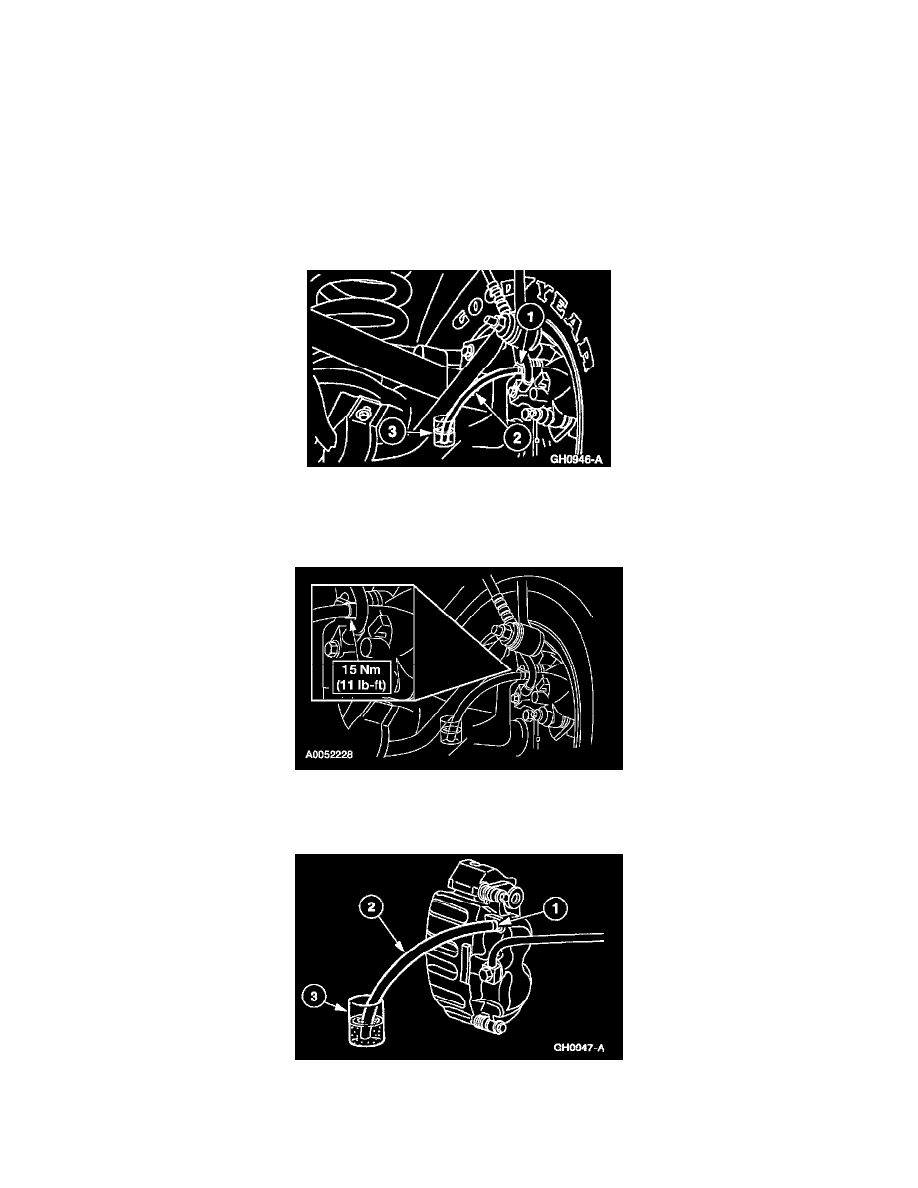Expedition 4WD V8-5.4L SOHC VIN 5 (2005)

with the specified brake fluid. Never reuse the brake fluid that has been drained from the hydraulic system.
CAUTION: Brake fluid is harmful to painted and plastic surfaces. If brake fluid is spilled onto a painted or plastic surface, immediately wash it with
water.
NOTE: When any part of the hydraulic system has been disconnected for repair or new installation, air may get into the system and cause spongy
brake pedal action. This requires bleeding of the hydraulic system after it has been correctly connected. The hydraulic system can be bled manually or
with pressure bleeding equipment.
NOTE: When a new brake master cylinder has been installed or the system has been emptied, or partially emptied, it should be primed to prevent air
from getting into the system.
1. Fill the brake master cylinder reservoir with brake fluid.
2. Bleed the rear disc brake calipers.
1. Place a box end wrench on the RH rear disc brake caliper bleeder screw.
2. Attach a rubber drain tube to the RH rear disc brake caliper bleeder screw and submerge the free end of the tube in a container partially filled
with clean brake fluid.
3. Open the bleeder screw and leave open until clear bubble-free brake fluid flows.
^
Repeat for LH rear disc brake caliper.
3. Tighten the rear disc brake caliper bleeder screws.
4. Bleed the front disc brake calipers.
1. Place a box end wrench on the RH front disc brake caliper bleeder screw.
2. Attach a rubber drain tube to the RH front disc brake caliper bleeder screw and submerge the free end of the tube in a container partially filled
with clean brake fluid.
